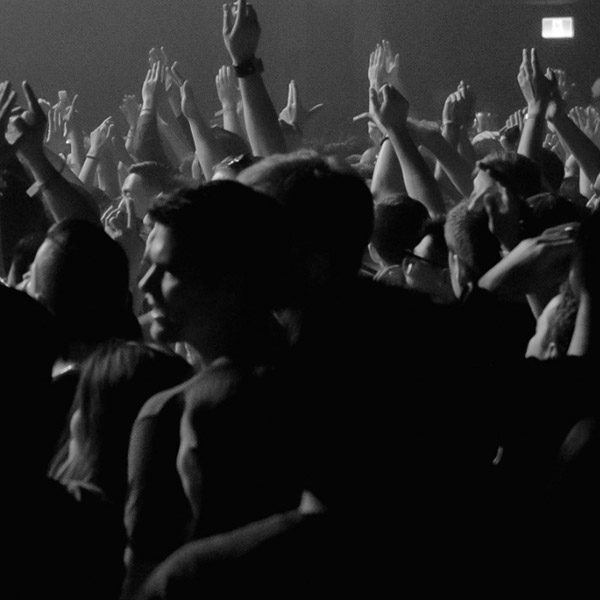Live Music’s Biggest Climate Challenge: New Study Looks at Impact of Fan Travel to Shows
How did you get to the last concert you attended?
If you’re like most music fans in the United States and Canada, you probably traveled by car. While taking public transportation would be more environmentally friendly, it’s less likely you went by bus or shuttle.You might be among the few that took the least environmentally friendly option and flew.
Now a new study by Reverb, the longstanding organization focused on sustainability in touring and the broader music industry, is presenting a comprehensive report on all the ways concert attendees get to shows. The study aims to better understand fan travel – long known as the biggest carbon emitter in the live music space – and facilitate solutions to bring down concerts’ environmental impact.
This study was done by Reverb over the last two years at more than 400 shows in over 170 North American cities. Reverb representatives surveyed more than 35,000 fans, asking them about how they got to the show, how they would’ve preferred to get there and the barriers that prevented them from taking a more sustainable travel option.
Out today (April 21), the results of Reverb’s Concert Travel Study aim to give a better sense of the playing field while demonstrating that fans want greener options, info that’s altogether meant to encourage collaboration on solutions among venues, promoters, artists and fans.
The study finds that driving is by far the most common way that fans get to shows, with 80% of respondents reporting taking a car. On average, 3,321 gas powered or hybrid vehicles were driven to any given show. On average, each car went 144 miles roundtrip and carried 2.5 people.
Meanwhile, just 9% of attendees used public transportation, although 33% percent said they would if there were better options available. And while only 7% of fans flew to shows, those flights accounted for 60% of all fan travel emissions.
All in, the study finds that fan travel creates 38 times more emissions than artist and crew travel, tour-related hotel stays and gear transportation combined. The average 11,000 capacity show creates 527 metric tons of fan travel-related carbon emissions, the equivalent of the energy it would take to power 110 homes for a year. On average, even larger concerts create 824 metric tons of carbon emissions.
But 89% of fans would take more sustainable transit options if there were better options and almost everyone surveyed — 90% of participates — said they’re concerned about climate change. See the complete study here.
“We’ve always known that fan travel is the biggest emitter, because you have thousands of fans versus a couple band members or crew members,” says Reverb’s director of impact Madeline Weir tells Billboard. “But the point isn’t to put pressure on fans or say its their fault; we want this to be an opportunity for artists, venues and the industry at large to acknowledge fan travel as the biggest source of emissions and work together with fans to see what solutions would make the fan experience better.”
The study suggests solutions like incentivized carpooling, which would provide better parking spots and expedited exit lanes to fans who arrive with a certain number of people in the car.
Weir also cites a desire to work with the aviation industry to help generate a bigger marketplace for sustainable aviation fuels, in order to bring down the cost of this fuel. Greener air travel is especially crucial when it comes to artist residencies, which typically entail most audience members traveling to see a stationary show.
“We’re never going to say to a band, you shouldn’t do [a residency], because it’s a fan experience and we definitely work with bands that do them,” Weir says. “It’s about talking about solutions with a band and their teams. And a lot of the artists that are at that [residency] scale are already doing a lot for climate, whether it be the offsetting model or more the philanthropy-based model.”
Weir also notes the importance of strategic routing, as emissions are naturally lower when fans travel shorter distances for a show. To wit, when an artist Reverb has partnered with provides the organization with their tour routing, Reverb provides them with information to send out to fans about various sustainable transit options, from carpooling to public transit to bike lanes. Reverb is also partnering with venues to provide tailored data from the study on what each specific venue can do to help fans arrive in greener ways.
The study was co-funded by Billie Eilish, a longtime Reverb partner and of the greenest artists in music. At the Los Angeles and Phoenix dates for Eilish’s Hit Me Hard and Soft Tour this past December, Elish’s team and Reverb provided shuttles from various park and rides for faster, greener transport to shows, demonstrating that there are straightforward options for artists who want to platform sustainability.
“Artists, venues and fans all need to work together to improve our environment,” Eilish says in a statement. “From solar-powered live shows to more sustainable touring, my team is always looking for ways to help the planet. I have the greatest fans in the world, and I hope this study will be a helpful resource for those looking to learn more about transportation options that cut down on pollution and build a better future for live music.”
Reverb is also helping venues and events look at what Weir calls sustainable “micro-mobility,” including gas powered shuttles, golf carts and other on-site transportation. (She cites Los Angeles’ Intuit Dome as a venue that’s currently enacting such measures.) Reverb is also currently working with Forest Hills Stadium in Queens, NY to create bike valets and promote the use of public transit.
“At Forest Hills, we promote public transit options as the number one way to arrive at the venue,” says the venue’s co-manager Mike Luba. “We love when partners like Reverb and artists amplify this promotion to reduce the number of emitting vehicles driven to our shows. It’s truly better for fans, the community, and us.”
Altogether, the study emphasizes the growing concern about, and push for, sustainability in the industry, with U.S. venues and events increasingly exploring clean energy technology, swapping single-use plastic cups for reusable options and encouraging artists, agents and promoters to incorporate green clauses in various contracts. This work is catching up the sustainability efforts Reverb has been enacting in the live sector since it was created in 2004, with the organization’s co-founder Adam Gardner saying that “listening to fans has always been key to our success.”
While the Reverb study encompasses a lot of data and many options for improvements, what it ultimately makes clear is that demand for greener travel options is significant, with 94% of fans saying they want to be able to take collective action on the issue.
“Venues, artists, promoters and fans themselves all have responsibility to do this together,” says Weir.
Katie Bain
Billboard









